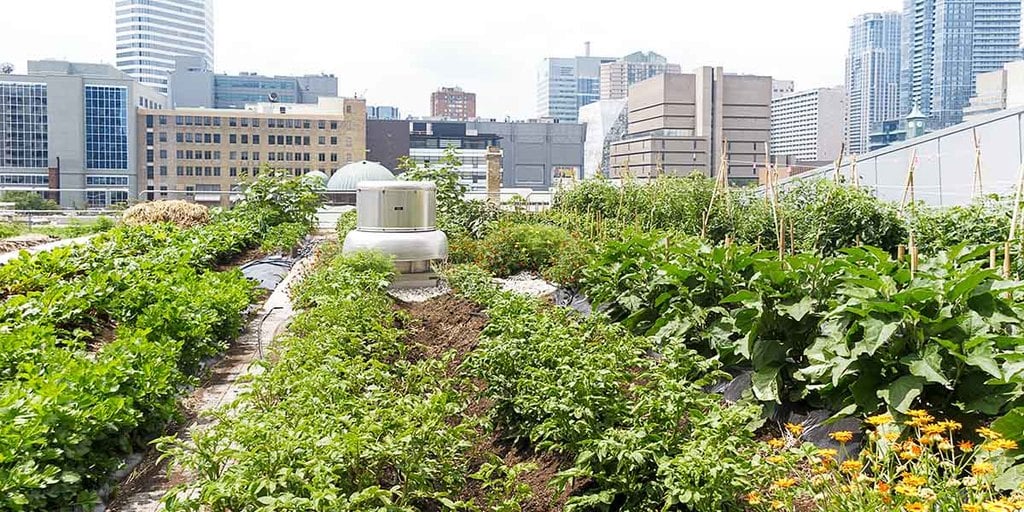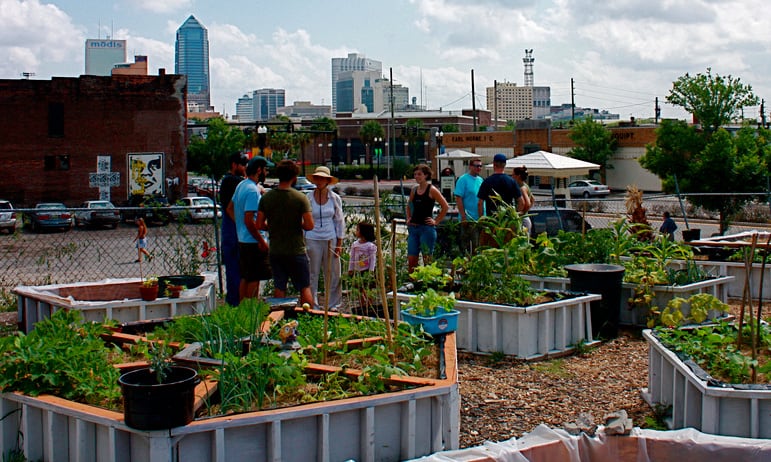All about City Blooming
All about City Blooming
Blog Article
City Blooming for Beginners
Table of ContentsThe Main Principles Of City Blooming Some Known Details About City Blooming The 9-Minute Rule for City BloomingCity Blooming Things To Know Before You Get ThisNot known Details About City Blooming
Interested in expanding food for sale in the City of Chicago? Below is a list of regularly asked questions concerning the policies and regulations that growers should think about when planning an urban farming task.
The zoning amendment does not modify any various other codes handling composting, building permits, buying or renting City had home, organization licenses or ecological contamination. There are existing codes that control these problems and they remain completely result and may be appropriate to your project. Neighborhood gardens are usually had or taken care of by public entities, public companies or community-based organizations and kept by volunteers.
Urban farms expand food that is meant to be sold, either on a nonprofit or for-profit basis. As a result of their industrial function, urban farms call for a company license. Yes. A neighborhood garden is allowed to offer excess create that was expanded on site if the sales are accessory or subordinate to the yard's main function defined above.
Not known Factual Statements About City Blooming
The quantity of compost material can not surpass 25 cubic yards at any offered time according to the criteria in 7-28-715 of the City's Municipal Code. Due to the fact that the soil at most new garden sites requires changing, compost, soil, timber chips, or various other materials can be acquired to create or boost the growing room.

If a building license is called for after that the hoophouse will be considered an accessory building. You can discover out more regarding the structure license needs by calling the Division of Structures. The 25,000-square-foot size limit is planned to avoid a solitary neighborhood yard from dominating an offered block or diminishing the block's existing residential or business character.
The limitation does not use to yards situated in Public Open Room (POS) areas. Can there be more than one area garden that is 25,000 square feet on a single block? Fence is not called for, nonetheless, gardens that have huge vehicle parking areas might be called for to install fencing or various other landscape design functions.
The Facts About City Blooming Revealed
B1 & B2 districts need that all commercial usage tasks be conducted indoors. Is fencing required for city ranches? Fencings might be needed, along with landscaping and testing, for particular car park locations and outside job or storage space areas depending on place and the details task taking location.
Yes. Urban farms require structure permits and zoning authorizations before building. Other forms of city testimonial might be required depending on specific frameworks, activities, size, landscape design, licensing, public heath and stormwater administration problems. Much of these needs are determined in the task layout or permitting process, however, the applicant may be liable to separately determine certain licenses or permits that might be needed.
Yes. The kind of permit is determined by what is taking place at the site. The Department of Organization Affairs and Consumer Protection can assist establish the specific kind of service permit that's required. Yes. Off road car park is required for many industrial tasks in Chicago. The needed variety of car parking rooms is based on the variety of employees dealing with site and not the square video footage of the growing room.
Some Known Questions About City Blooming.

Yes. An urban ranch can sell compost product created on site, however, the operation should follow the guidelines in 7-28-715 of the Chicago Municipal Code. Yes. Aquaponic systems are permitted indoors on urban ranches in several zoning districts. However, a zoning testimonial and building authorization is required in order to set up frameworks or systems and a service certificate is required as explained above.
As much as 5 hives or colonies of honey bees may be kept as an accessory usage. Beekeepers need to register with the Illinois Department of Farming. For more information about the recommended zoning amendment you might contact the Division of Housing and Economic Advancement, Bureau of Preparation and Zoning at 312.744.8563.
Farming in cities and metropolitan areas An urban farm in Chicago. Urban agriculture refers to various techniques of cultivating. https://www.merchantcircle.com/blogs/city-blooming-san-francisco-ca/2024/6/City-Gardening-Growing-Urban-Spaces/2755418, handling, and distributing food in city locations. The term likewise puts on the area activities of pet husbandry, tank farming, beekeeping, and horticulture in a city context. Urban farming is distinguished from peri-urban agriculture, which happens in country locations at the edge of suburban areas.
The City Blooming Statements
It can involve a motion of organic farmers, "foodies" and "locavores", who seek to develop social media networks based on a shared principles of nature and area holism. These networks can establish using official institutional assistance, becoming integrated right into regional town planning as a "shift town" motion for sustainable urban growth.
Some of the first proof of urban agriculture comes from Mesopotamia.
Report this page